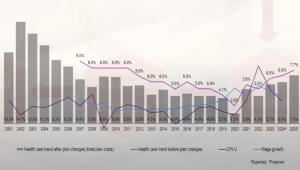Life care planning is about more than just listing out future treatments, therapies, or equipment. It’s about figuring out how much that entire plan is going to cost — not just someday in the future, but right now. This is where present value calculations come in. And while that might sound like something only a financial analyst should care about, it’s actually critical for anyone working in personal injury law, case management, or rehabilitation planning.

The process starts with breaking a life care plan into pieces. Each category of care — whether it’s physical therapy, medication, home modifications, or caregiver support — is handled as its own element. For each element, you determine the unit cost (what it costs today), how often it will be needed, and for how many years based on the person’s life expectancy. Multiply those numbers together and you’ve got the projected future cost of that item.
But here’s where things get more complex: a cost 15 years from now isn’t going to be the same as that cost today. Inflation changes everything — and medical inflation, in particular, changes it faster.
Why Medical Inflation Is a Big Deal

When projecting the future cost of care, it’s not enough to use the regular Consumer Price Index. Medical services and supplies tend to increase in price much faster than general goods. That’s why any life care plan calculation has to use a separate rate just for medical inflation.
The average rate of medical inflation used in professional projections today is around 7.82%. That’s not pulled from thin air — it’s an average of predictions from top healthcare consulting firms like WTW (Willis Towers Watson), AON, Mercer, Seagull, and others. These companies track the market closely, so their estimates are grounded in current trends and data.
What this means practically is that a $20,000 annual treatment today could be closer to $40,000 or more in just a few years. That kind of increase can seriously change the total cost of a life care plan over time.
If you’re looking for a broader overview of how life care plans are priced and defended, check out our related post: Life Care Plan Costing Explained: Tools, Methods, and Pricing Strategies that Hold Up in Court
What About General Inflation?
General inflation — the kind that affects things like food, transportation, and utilities — also plays a role, but it’s typically lower and more stable. While it still matters, it’s especially important to recognize that not every category in a life care plan should be inflated at the same rate.
For example, if the plan includes buying a specially modified vehicle every few years, that cost might follow general inflation, not medical inflation. Items like wheelchairs or home accessibility upgrades may also follow a more general trend, unless they’re based on evolving medical tech. The key is to separate what’s medical and what’s not, and apply the correct inflation rate to each.
Calculating Present Value: Making Future Costs Meaningful Today
Once you’ve figured out what everything will cost in the future, the final step is to convert that into a number that makes sense today. This is called the present value — the amount of money that would need to be invested now in order to fully fund the future plan.
The present value formula takes into account not only the total cost of future care but also the rate of return on investments (interest) and inflation. In other words, if you invest the right amount now and it earns a reasonable return over time, you should be able to cover all future care needs without running out of funds.
To do this accurately, a lot of planners use TIPS — Treasury Inflation-Protected Securities. These are U.S. government bonds that automatically adjust for inflation. They’re low-risk, stable, and ideal for long-term planning because they protect the value of your investment over time.
Each year in the plan is matched with the appropriate TIPS maturity (5-year, 10-year, 20-year, etc.), and then the discount rate for that year is used to reduce the inflated future cost down to its present value.
Spreadsheet Example: Putting It All Together
Let’s say there’s a projected cost of $20,000 per year for a certain medical treatment, continuing for 20 years. After applying medical inflation (say, 2.75% annually), that cost grows year by year. By year 20, the cost may be closer to $34,000 for that single year. Adding all those years together gives you a total future value of over $538,000.
But when you apply the present value formula using appropriate discount rates (based on TIPS), the total amount you would need to invest today drops to about $446,668. That’s the power of present value — it helps you budget more realistically and accurately for long-term needs.
In this spreadsheet model, each year has its own line. The cost is inflated forward, then discounted back to today using the TIPS rate for that specific year. These rates vary slightly — for example, 1.68% for the first few years, rising to 2.05% or higher for later years — and those changes are reflected in the formula to ensure accuracy.
This method is repeated for each category in the plan. Then, all the present values are added together on a summary sheet. That final number is the total present value of the life care plan — the amount that would need to be set aside now to pay for everything in full over the patient’s lifetime.
Common Issues and Tips
Not everything is easy to time out. For example, a plan might say a person will need two surgeries in the next twenty years, but not specify exactly when. In that case, the cost could be averaged over time, or placed in estimated time frames (like one surgery in the first five years, another in the next five). Either way can work, as long as the assumptions are clearly documented.
Other helpful practices include:
• Labeling each category clearly, so it’s easy to update or review later.
• Separating medical and non-medical costs, and applying the right inflation rates.
• Consulting physicians or clinical experts when timing or frequency of care is uncertain.
• Naming variables in Excel for easier tracking and cleaner formulas.
Even if the math sounds complex, the logic is simple: we want to know how much to set aside now so that future care is covered—no guesswork, no surprises.
Want to See the Full Walkthrough?
If you’re interested in seeing how all of this looks in action, with real spreadsheets and formulas, you can watch the full webinar here. It includes downloadable templates, a full breakdown of inflation models, and answers to common questions about timing, valuation, and planning strategy.
Whether you’re building a life care plan for litigation, insurance, or long-term case management, understanding present value helps ensure fair, realistic, and fully funded care for years to come.






